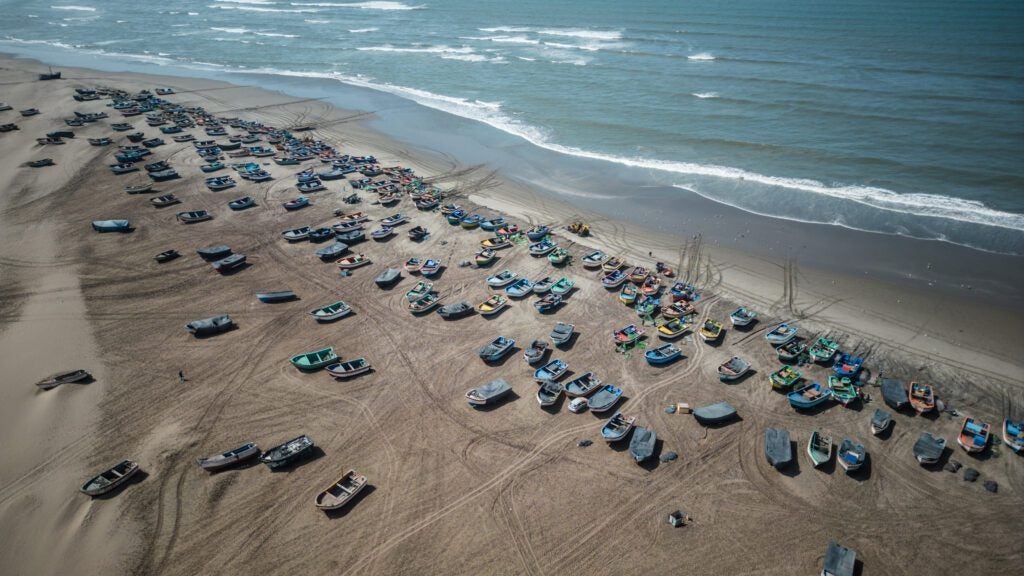Founded on Fish
BY: Sarah Holcomb
How Oceana is campaigning to protect abundant oceans in Canada and Peru
Search for the world’s longest, most sprawling coastline and you’ll find it in Canada. Look for the world’s largest fishery and you’ll end up surrounded by millions of anchoveta in the waters of Peru.
It’s no surprise that fishing looms large in these two countries, driving their economies and providing
a cultural touchstone to rich traditions. Both countries depend on abundant fish — especially those at the bottom of the food chain — and flourishing ocean habitat for fish to thrive.
Since it established campaign teams in Canada and Peru in 2015, Oceana has fought to ensure that healthy fisheries and healthy habitats last far into the future, just as they have thrived in centuries past.
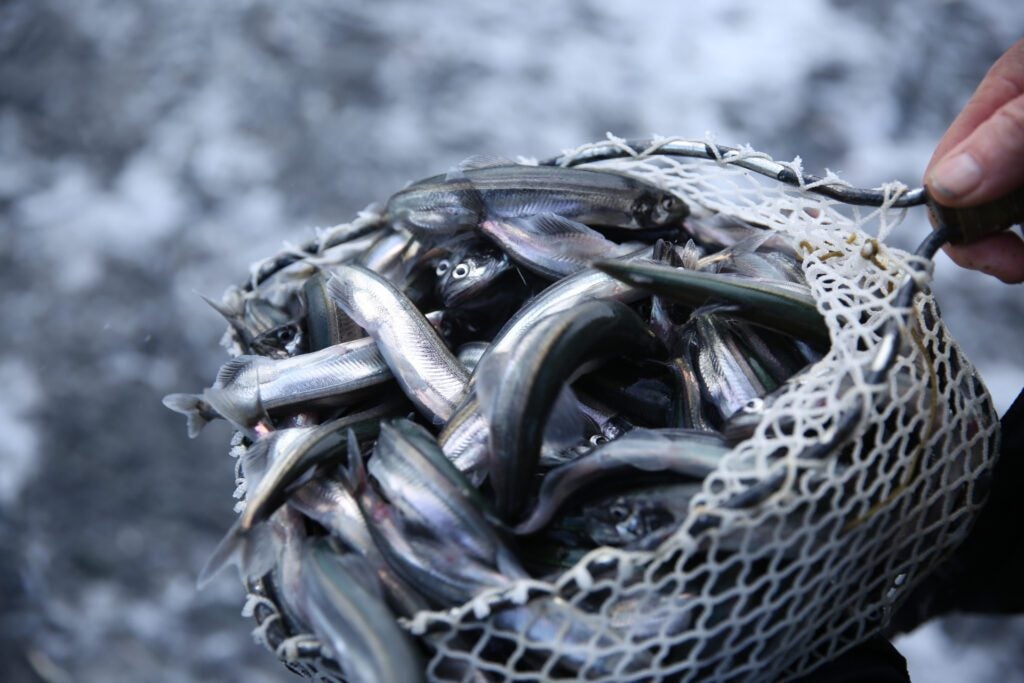
© Oceana Canada / Nicholas Hiscock
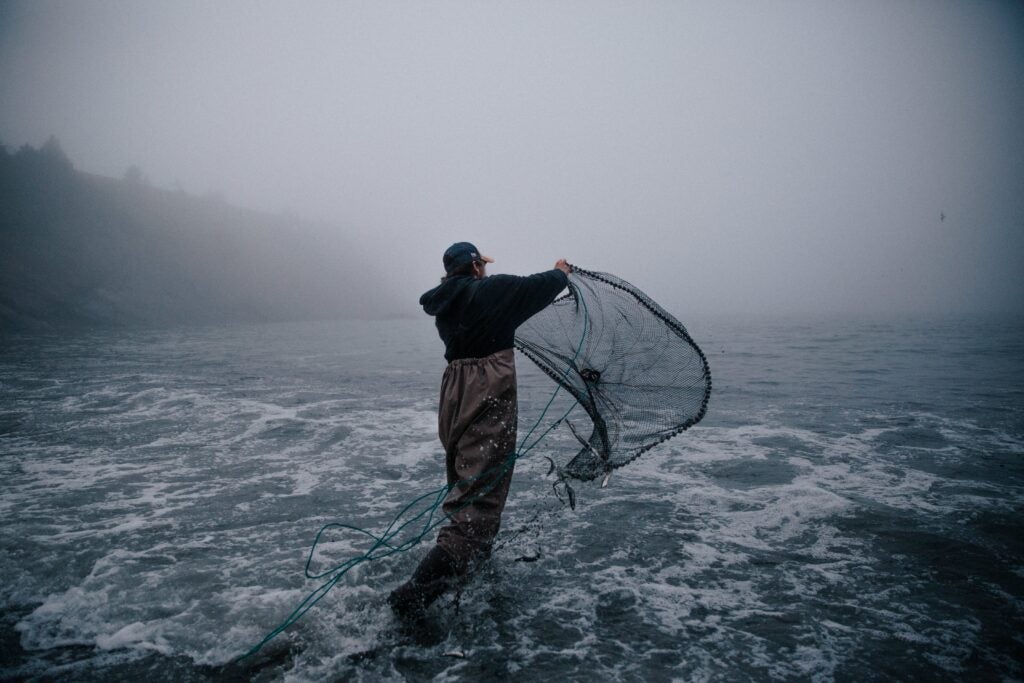
The capelin are coming
When tens of thousands of shiny silver fish roll up onto the shores of Canada’s easternmost province, Newfoundland and Labrador, word spreads fast. Every year, the small forage fish, called capelin, come to spawn on the beaches during the summer. And they draw scores of northern cod, humpback whales, sea birds, and, of course, human observers, with them.
“The capelin leaps out of the ocean and into the above-surface realities for people,” describes Shane Mahoney, a resident of Newfoundland and Labrador and founder of Conservation Visions Inc.
People gather at coves known as capelin hotspots to scoop up the fish with nets or whatever buckets — or, in the case of some college students, pasta strainers — they have on hand. Local beaches transform into festivals, lit with campfires, covered in beach blankets, and brimming with family picnics. For kids, the annual event known as the “Capelin Roll” might be their first encounter with Canada’s oldest industry: wild fisheries.
Capelin has been harvested alongside cod since humans have lived in Newfoundland and Labrador. People cook with capelin, or find other uses like fertilizer, bait, or dog food. “This fish is quite democratic,” says Jack Daly, Marine Scientist at Oceana Canada. “Everybody can grab it.”
Today, aside from the summertime Capelin Roll fishing bonanza, capelin are largely caught by Canada’s fishing industry and exported to Japan, China, and Europe. Capelin eggs draw demand as roe for sushi. After intense industrial fishing, capelin has now suffered a steep decline, currently at approximately 9% of its historic population.
For many, this trajectory eerily echoes the infamous northern cod collapse of 1992, when one of Canada’s most prominent fisheries disappeared after years of overfishing and poor environmental conditions. When Oceana partnered with a Canadian polling agency to conduct a survey in Newfoundland and Labrador, it found that over 80% of people in the province support closing the commercial capelin fishery so the fish can recover before it’s too late.
“I think everyone belongs as part of the decision-making process. [Even if] you are not a fish harvester, you’re still a human being who needs to live on this planet, eat somehow, and deal with the consequences of climate change,” says Jasmine Paul, a fourth-generation commercial fisher in Newfoundland and Labrador. “I think everyone should be involved and have as much information as possible.”
All about rebuilding
Capelin is not an isolated case. Less than one-third of Canada’s fish stocks can be considered healthy today, Oceana’s 2023 Fisheries Audit found. The rest are in critical or cautious zones, or have an unknown status. Since its establishment in Canada, Oceana has focused on rebuilding Canada’s fisheries, starting with making scientific information about the status of fish populations available to the public for the first time in 2017 — and every year since.
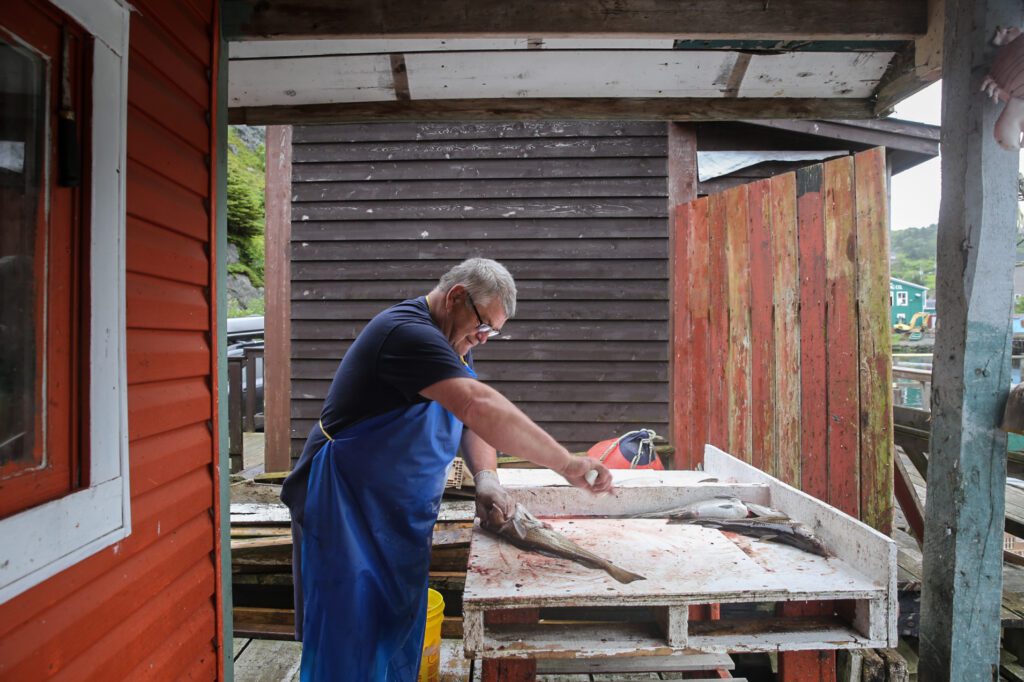
In 2019, Oceana won a breakthrough victory. It successfully revamped Canada’s fisheries law to require depleted fish populations to be rebuilt and well-managed. “Now we’re implementing the law,” says Joshua Laughren, Oceana’s Senior Vice President in Canada.
According to Oceana’s latest analysis, a dramatic turnaround is possible. The number of healthy fish stocks in Canada could be brought from 30% to 80% within a decade. It will take urgent action and require the government to track all forms of fishing and steadily monitor boats.
Capelin are among the most important fish populations to rebuild. As forage fish, they’re food for many other species, from puffins to seals to humpback whales. That means capelin are foundational to a healthy economy in Newfoundland and Labrador, which not only depends on fishing, but increasingly on ocean-based tourism. “A lot is riding on the little fish,” says Laughren.
In the face of mounting scientific evidence that the capelin fishery is nearing the edge, industry pressure continues to sway decision-making. Government scientists confirmed that capelin populations are depleted, yet Canada’s Minister of Fisheries and Oceans did not reduce the existing fishing quota — approximately 14,500 tonnes
(16,000 tons) of capelin. Science-based limits are a must to rebuild fisheries, Oceana’s team argues, for capelin as well as Canada’s dozens of other depleted fish populations.
Rebuilding fisheries also goes hand-in-hand with protecting ocean habitats. “If we don’t have healthy habitats, whatever fisheries management we do won’t be successful because there’s no healthy place for them to live,” says Laughren. Canada’s ancient coral forests can be wiped out with a single pass of a trawl net.
When Oceana came to Canada in 2015, less than 1% of the country’s oceans were protected from industrial fishing. Today it’s at 15% and growing. In 2024, Canada’s government is expected to designate a new protected area off the West Coast that will cover nearly 140,000 square kilometers (54,000 square miles). This area includes 97% of Canada’s coral-covered seamounts.
Oceana previously led an expedition to gather scientific evidence for the protection of these seamounts, working with the Canadian government and First Nations to bring to light their importance and put a plan in place for their management. Canada and the Nuu-chah-nulth Tribal Council, the Council of the Haida Nation, Pacheedaht First Nation, and Quatsino First Nation have since signed a memorandum of understanding to cooperatively manage the new protected area.
“The stunning diversity and abundance of life on the seamounts leave no room for hesitation about protecting them,” said Dr. Robert Rangeley, Oceana’s Science Director in Canada. “This is a critical step toward protecting this extremely important marine ecosystem.”
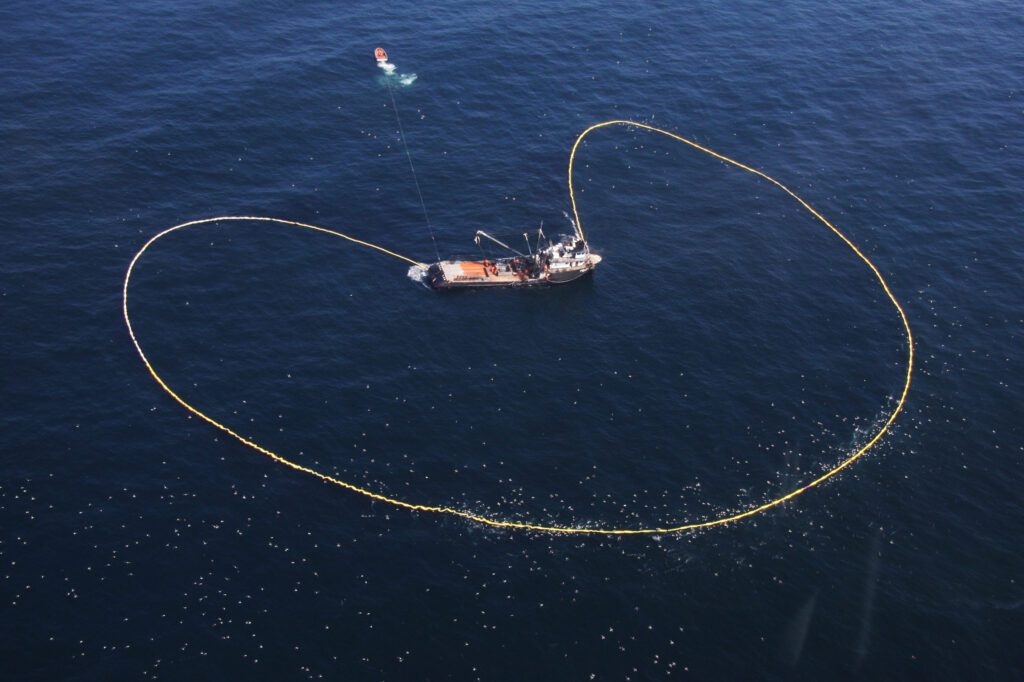
Protecting Peru’s ocean
Thousands of miles to the south of Canada, the sandy, rocky shores of Peru loom over an ocean abounding with marine life. Peruvians have practiced fishing for millennia — from submerging reed baskets to trap fish, to later fashioning nets made of cactus threads and hooks from shells.
In the last century, Peru’s fishing underwent a dramatic transformation. As the country rapidly exported fish to feed allied troops during World War II, its catch skyrocketed. Between 1938 and 1970, Peru’s total fish landings increased by 400 times in less than 40 years.
By weight, roughly 80% of the fish caught in Peru today are Peruvian anchoveta, silver fish in the anchovy family that, to a Canadian, might resemble a smaller version of capelin. As forage fish, they’re a cornerstone of the ecosystem. And in Peru’s economy, the small fish boast big value in the fishmeal and fish oil industries. Now the country’s fourth-largest export, Peru’s fishmeal is shipped around the world to use for livestock, pet food, and farmed fish feed.
Little information about the full extent of industrial fishing in Peru was available to the public, however, until 2017, when Oceana successfully campaigned for the country’s authorities to make near real-time data from Peru’s vessel monitoring system accessible online.
Industrial fishing — much like intensive farming on land — takes a toll on the marine environment. A 2022 survey revealed that 85% of Peruvians are concerned that authorities are not protecting the Peruvian sea and its resources. Nearly all (98%) of those surveyed supported the creation of marine protected areas (MPAs) to conserve biodiversity in the ocean.
Peru’s first-ever offshore marine protected area was established in the Nazca Ridge National Reserve in 2021, following campaigning by Oceana and its allies. Covering more than 60,000 square kilometers (over 23,000 square miles) off Peru’s southwest coast, it protects a vast underwater mountain range home to over a thousand recorded species. Over 40% of the fish and invertebrates seen here are found nowhere else on Earth.
Initial celebration gave way to disappointment, however. Caving to industry pressure, Peru’s government granted commercial fishers the ability to fish for tuna, anchoveta, and other species inside the so-called protected area. In fact, says Carmen Heck Franco, Oceana’s Policy Director and Campaign Coordinator in Peru, commercial fishers took a greater interest in Nazca Ridge after it was “protected,” fishing more frequently in attempts to establish their presence there.
“The Peruvian legal framework is clear on the prohibition of industrial fishing within marine protected areas. We are determined to ensure that this prohibition is enforced in the Nazca Ridge and future protected areas,” says Heck. “The fishing industry is very influential in Peruvian politics, but we know that sustainability can triumph over private interests. It has been done before.”
“The Peruvian legal framework is clear on the prohibition of industrial fishing within marine protected areas. We are determined to ensure that this prohibition is enforced in the Nazca Ridge and future protected areas,” says Heck. “The fishing industry is very influential in Peruvian politics, but we know that sustainability can triumph over private interests. It has been done before.”
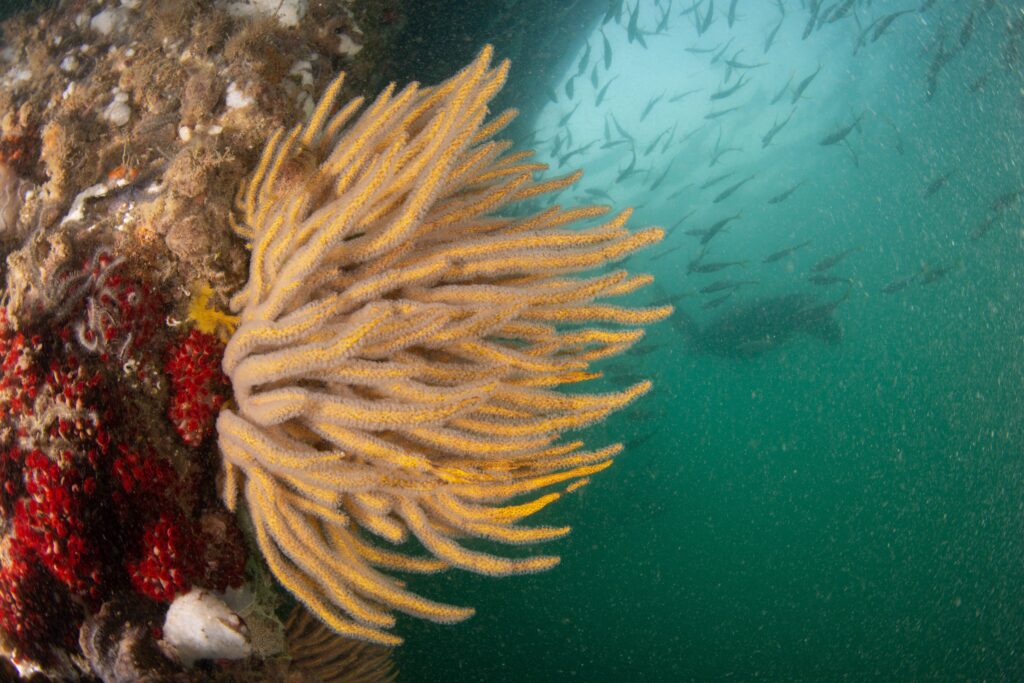

The fight over fishing
Led by local artisanal fishing leaders, Oceana accomplished one of its most significant victories in Peru in May 2023: A victory that gave artisanal fishers the exclusive right to fish Peru’s coastal waters.
More than 50,000 Peruvian artisanal fishers rely on Peru’s coastline to provide 80% of the fish that feeds the country’s population. Amidst an industrial fishing boom, Peru’s small-scale artisanal fisheries remain as vital as ever. “Fishing
is as important to Peru’s cultural heritage as it is to its economy,” emphasizes Juan Carlos Sueiro, Oceana’s Fisheries Director in Peru.
The five nautical miles closest to Peru’s shore are particularly important, serving as a breeding ground for anchoveta and other fisheries. This area is “likely more significant for biodiversity than any other coastal zone,” according to Oceana’s Science Director in Peru, Juan Carlos Riveros. Artisanal fishers possessed the exclusive right to fish in this zone for over 30 years, using selective gear that causes minimal impact to ocean life and habitats.
In recent years, however, boats using purse seines — weighted nets that surround a school of fish, capturing the fish and sometimes other creatures that happen to be in the way — grew increasingly popular. Despite not using low-impact, traditional artisanal fishing methods, these boats enjoyed the same close-to-coast privileges afforded to artisanal vessels.
In a big win, Oceana and its artisanal fisher allies successfully campaigned for a new law that reserved the zone closest to the coast for fishers using truly artisanal methods, not purse seines.

“The approval of this law will ensure the country’s food supply for the present and for future generations,” emphasized a group of artisanal fishers from Lima known as the collective, “Guardians of the Five Marine Miles.”
Now, Oceana’s team is addressing the next challenge: the ever-growing number of illegal fishing boats on the water. “Peru’s fleet is too big, and it continues increasing even though the building of new vessels has been prohibited for 10 years,” explains Heck. “The law isn’t being followed.”
These new vessels — the same kind that use purse seines — impact artisanal fishers in the coastal zone. “Studies have already proven that artisanal fishers have been suffering a decrease in income because the fleet is too big,” says Heck. “The fishers need to increase their fishing effort in order to catch the same amount of fish they caught before, requiring more time and more money.”
Oceana and its allies campaigned to increase the government’s ability to enforce the decade-old prohibition, reclassifying the act of building these vessels as a crime, and penalizing those who build them. In January 2024, the new law was published, giving prosecutors and police better tools to fight this crime and contribute to the common goal of protecting the oceans.
Coming together
The future of fisheries and their habitats — in Peru, Canada, and beyond — remains tightly interconnected. Oceana continues to campaign for science-based catch limits and regulations to keep fishing in check, and protections to safeguard biodiversity for good.
“The ocean and fishing [are] a shared human heritage. Every country, every culture, everywhere in the world knows how to fish and has always fished, so it’s one thing that brings us all together as people,” says fourth-generation fisher Jasmine Paul. “It might be different species and different techniques but there’s just some kind of connection to going out there, catching your own food, and bringing it home.”
And with the right protections in place, both fish and fishers will thrive for generations to come.
